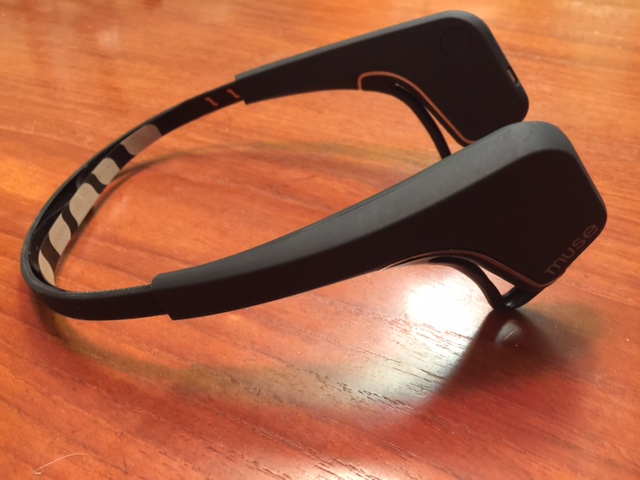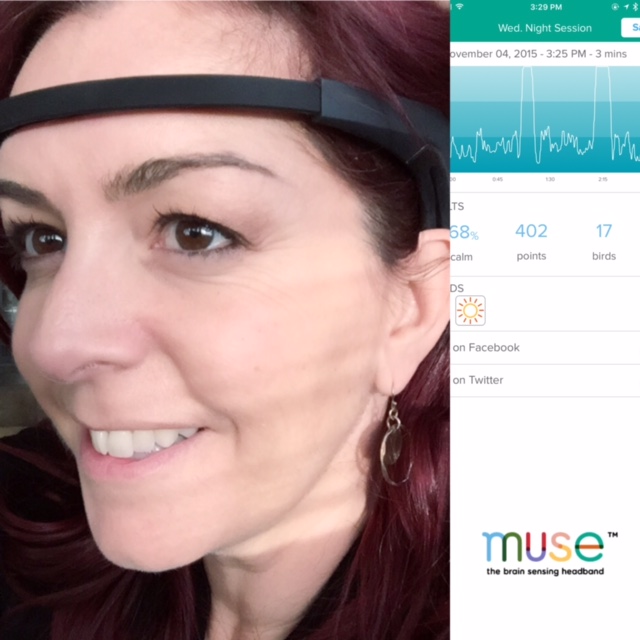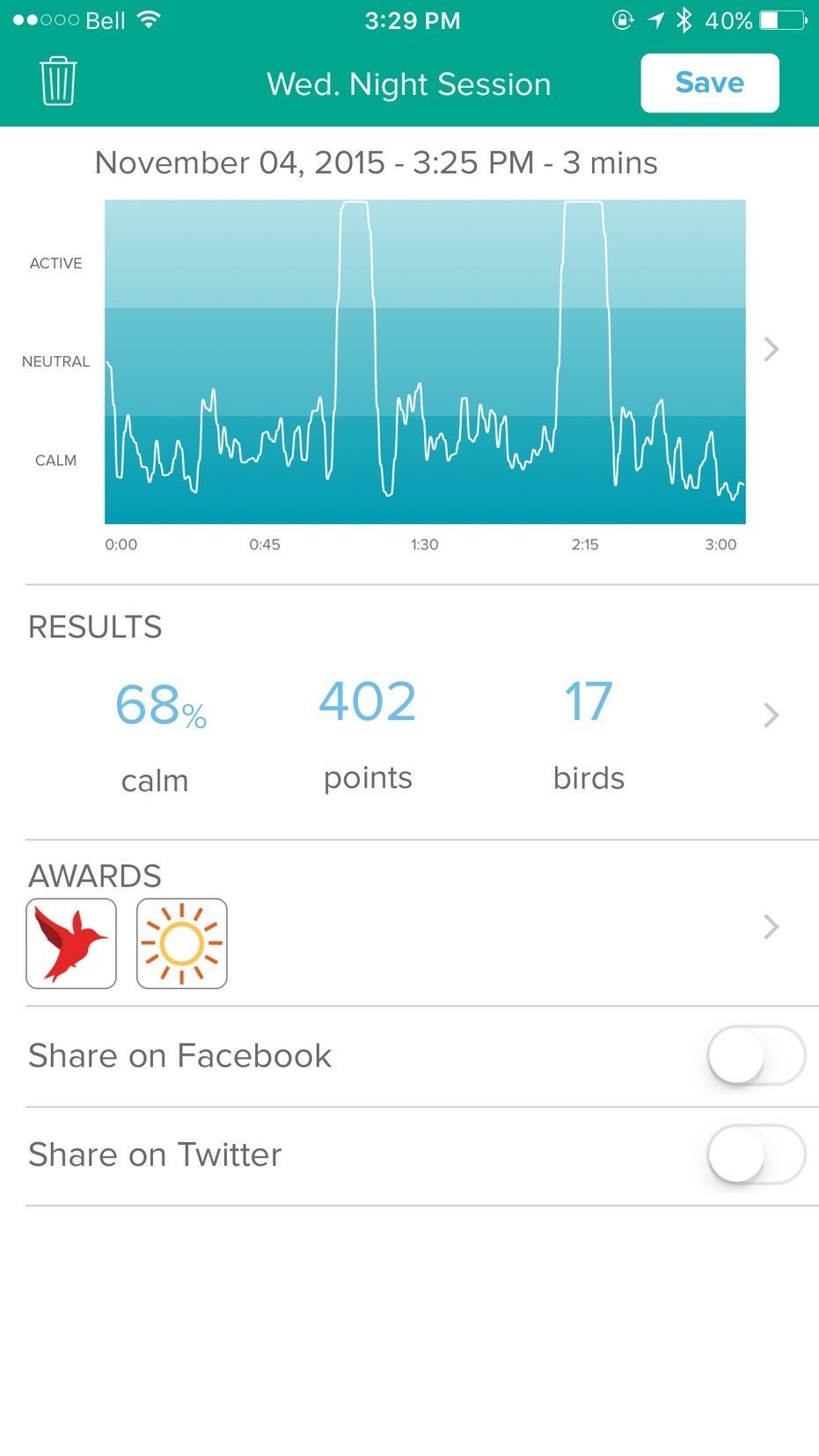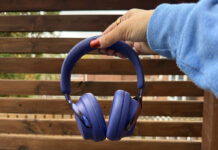 A brain sensing headband. Sounds a little strange, no? I thought so when the Muse Brain Sensing Headband landed on my desk this month. I found the idea of testing a brain seeing headband a wee bit… weird. After all, do I really want some app peering inside my head? Is that even what it does? I was able to review a Muse for a week to test it and find out.
A brain sensing headband. Sounds a little strange, no? I thought so when the Muse Brain Sensing Headband landed on my desk this month. I found the idea of testing a brain seeing headband a wee bit… weird. After all, do I really want some app peering inside my head? Is that even what it does? I was able to review a Muse for a week to test it and find out.
It turns out the Muse Brain Sensing Headband is nowhere near that scary or intimidating, and after testing, I actually found it was fun, relaxing, and a real conversation starter.
What is Muse?
Muse is a device you wear around your head, kind of like headphones in reverse. It’s meant to help you meditate, or just plain relax by walking you through a series of guided meditations or “relaxation sessions”, if you want to sound less new-age.
Muse measures the activity inside your brain, through the skin, and can tell you if your mind is active or calm, and as a result, can tell you how well and truly you’re relaxing. The device itself is paired with a free app which helps talk you through each relaxation session, which can last as long as you like; from 3 minutes to 45 or more.
How Does Muse work?
Muse measures brain signals much in the same way a heart rate monitor can track your heartbeat. Muse has seven sensors across the front of the headband that detect and measure the activity of your brain.
Muse powers up with touch of a button, and will always link back to your smart device via Bluetooth, with no pairing needed each time. The first thing it will do each day is calibrate itself, to measure how your brain is that day. The app says that’s because your brain is different each day, and it wants an accurate snapshot of where you’re at on any given day.
You simply strap on the headband by fitting it around your forehead and tucking the larger parts of the headphone-like device behind your ears. To calibrate, Muse has you perform a set of “thinking” exercises. It asks you to think of things related to three random categories; for example, “kinds of fruit,” and you’re supposed to imagine an apple, orange, banana, whatever. Once the band is calibrated, you’re ready to begin relaxing in earnest.
Muse asks you to put the phone/app down and get into a relaxed position, with shoulders relaxed and your eyes closed. The app asks you to become aware of your breathing, and focus on your “out breaths”. Then basically you’re supposed to think of nothing. Nothing but your breathing. The app uses wind and waves sound effects to tell you how quiet your brain is at the moment; more wind and heavier waves you hear emanating from the app, the more active and busy your mind is. Hear calm seas and chirping birds? You’re chill. You’re supposed to focus on these sounds, and your breathing, to keep your mind quiet for the duration of your relaxation session.
 Muse then plots out your brain activity on a graph so you can see when you were calm and where you may have been more active across the timeline of the meditation.
Muse then plots out your brain activity on a graph so you can see when you were calm and where you may have been more active across the timeline of the meditation.
Can Muse REALLY sense my Brain? Trying to fool the device
I got to wondering if Muse really worked. After all, the app could probably just walk me through a guided meditation and then tell me I did a great job. How would I know it was actually measuring my brain’s activity? I thought trying to fool the headband would be a neat way to test its accuracy.
I tried this in a couple of ways. I’d try to sit still and focus on the meditation and breathing as the app requests. But then a couple of times per session, I would deliberately startle myself and open my eyes, then try reading something nearby, or check the time and plan my day, or do some other type of mental task that would remove my focus from the meditation.
It does really seem like the headband was able to detect those disturbances (see the spikes on the graph to the left). In my sessions, and those I tested with some other people, everyone’s brains were able to register very active levels when they were disturbed or asked to focus on something other than the meditation, like doing multiplication tables. In fact when we looked at it on the timeline, the moments myself or my guinea pigs were disturbed clearly matched the time on the Muse timeline. I was impressed. Muse really seems to be able to read the brain.
Reading Muse results
As I mentioned above, the Muse app gives you a results after each session. You get a line graph of your minute by minute results showing when your brain was calm, when it was neutral, and when it was active. Underneath that is a percentage and points chart that shows what percent of the entire time you remained calm.
This app also gameifies your meditation, by awarding “birds” which you earn through your meditation by staying calm for long periods of time. You can also earn badges, like the “birds of Eden award” which you get for being calm frequently, and earning lots of individual birds. Another badge you can earn is the “Clarity Award”, which you get for being more than 60% calm in a single session. I thought this was a fun little challenge that makes the idea of meditating seem less dull.
Wearing the headband
While I felt as though I looked like one of the characters from Star Trek the Next Generation, the headband was quite comfortable to wear. (Check out my short video above to see how the headband really looks and how the app works) The front inside of the band is lined with what looks like metal, presumably to better contact your head and skin. The rest of the headphones are plastic, and overall the device is quite lightweight. The worst part about it was the pads that hold behind your ears. They can be a bit uncomfortable at first, but that fades quickly. The headband doesn’t get in the way if you’re laying back, and it doesn’t buzz or make any strange sounds; it really is like wearing a basic headband.
I tried Muse out on a few coworkers, and everyone really enjoyed the experience. In fact they were vying with each other to see who had the calmest brain. I was sending everyone their brainwave charts and they were comparing it like grades in school!
Is Muse safe or is it frying my brain?
Some of my test subjects wondered aloud if Muse was safe to use, or what, exactly it was doing to the brain. I checked in on the company’s website, and it seems they’ve been asked this question before. They report Muse has been tested and certified in accordance with Canadian, USA and European regulatory standards (FCC, UL, CE).
Muse says, “the measurements Muse takes are harmless to people and only provide information about your general state. Brain sensing has been used in hospitals and research institutions for over a century to study various aspects of the brain’s function.”
Are there any concerns with Bluetooth signals that Muse uses to share info from the headband to the app? Muse writes, “Bluetooth radio waves are roughly 100 times less powerful than a cell phone radio waves and is used in millions of devices designed to be worn on the head, like headsets and headphones.”
The Coles Notes
Pros
- easy to use and set up
- results seem realistic and useful
- a nice way to relax during the busy holiday season
- a major conversation piece
Cons
- I honestly don’t have any, except for perhaps the price. It’s definitely an investment.
Overall I surprised myself by really enjoying the Muse experience. I wouldn’t call myself a hippie or describe myself as someone who’s into meditating, but I felt that this was a really great way to remind myself to slow down, take some fresh air into the old lungs and not be so focused on life.
The device is super easy to use and navigate and it was a fun conversation piece, both at work when I brought it in for testing, and at a party. Guests were quizzing me constantly about how it worked and whether I liked it, and everyone wanted to try it.
I think this device would be great not just for someone who’s into meditation, but for anyone who needs help slowing down and taking it easy. Using Muse will definitely help you focus on yourself, and provide even a few minutes where you can stop and take time out of a busy day. I found it helpful and enjoyable for me, and I bet you will too.
Muse Brain Sensing Headband is available at Best Buy. It’s also got an optional carrying case too.




Great Article, Thank you.
Comments are closed.